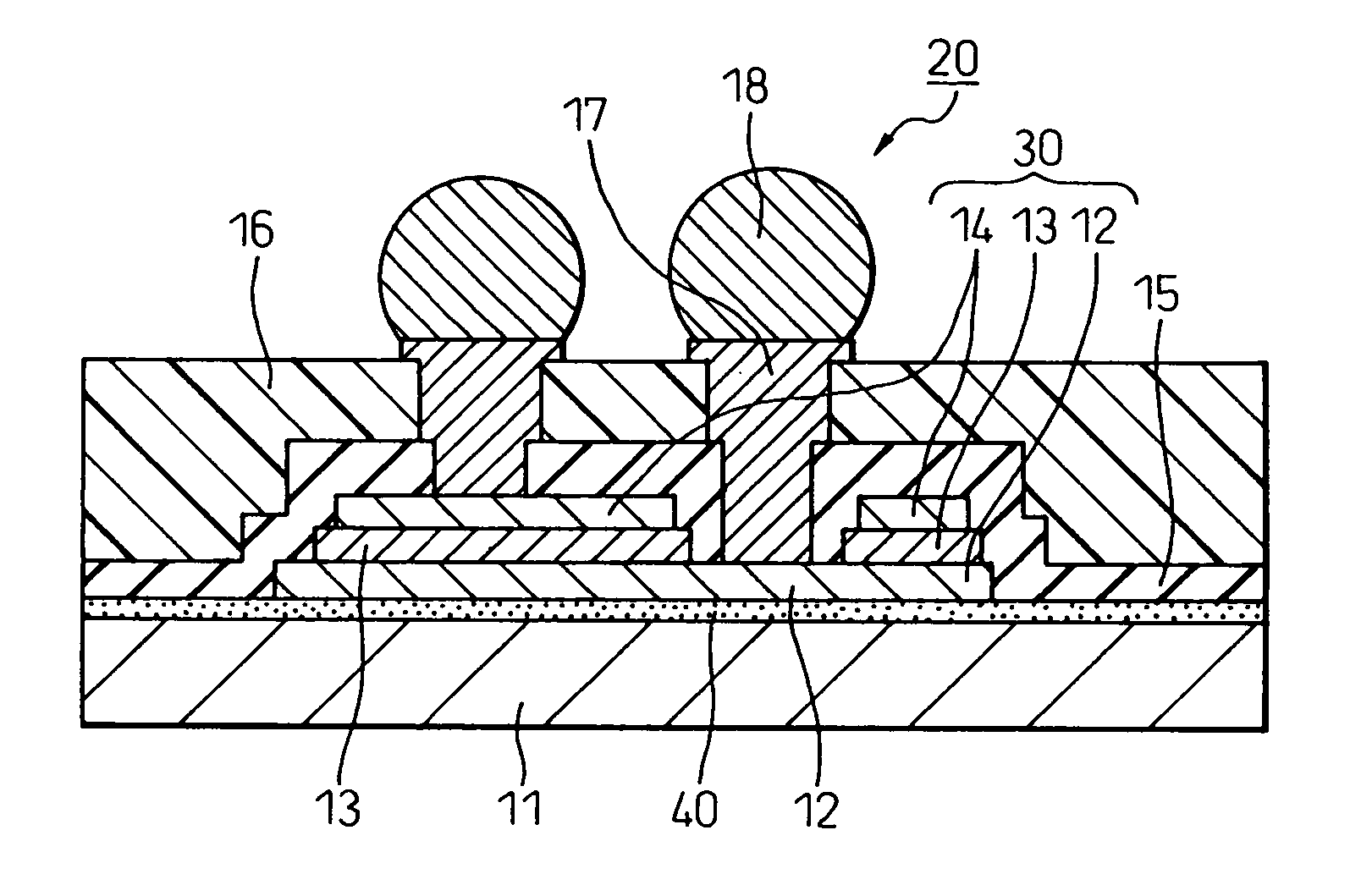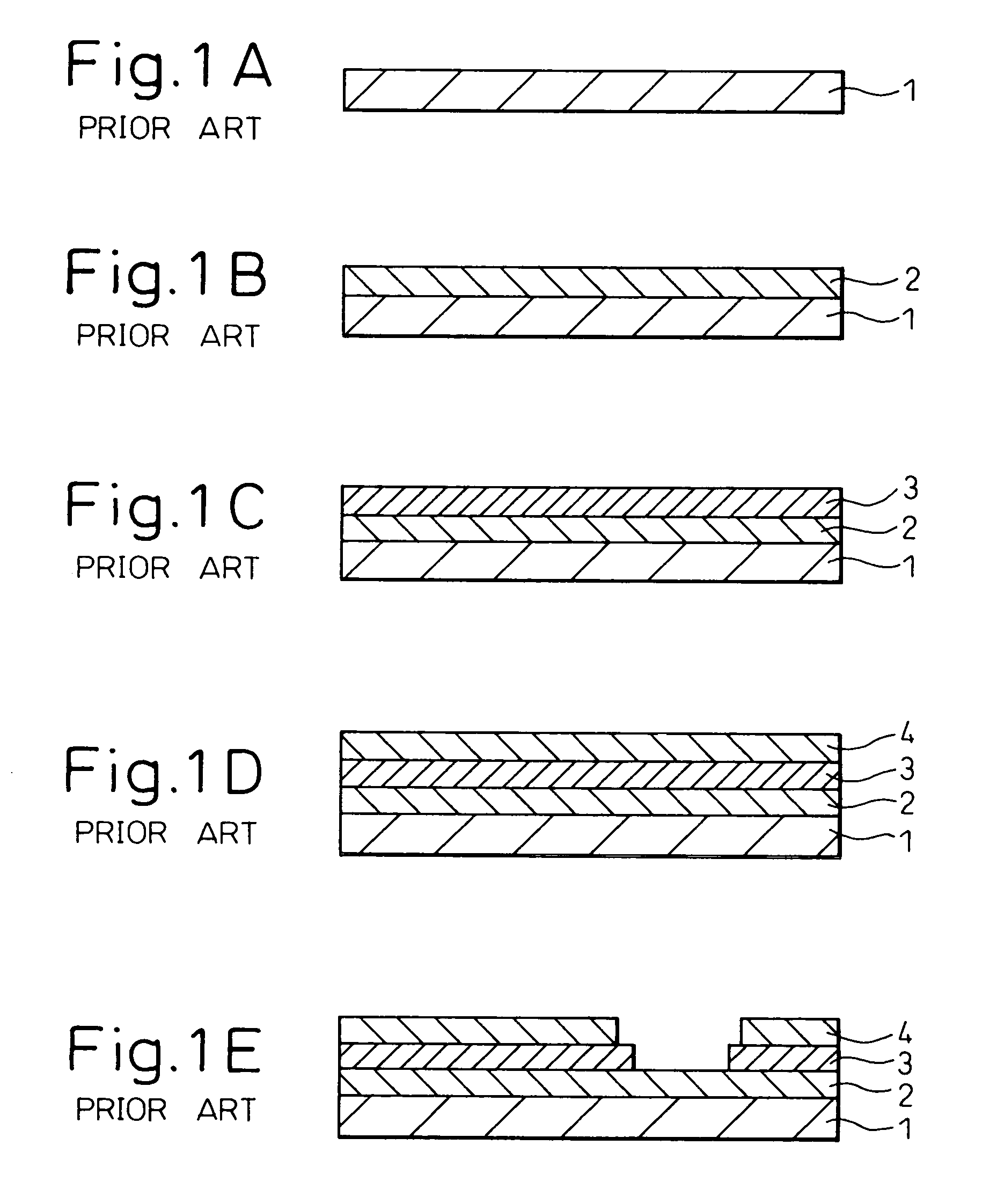Layer capacitor element and production process as well as electronic device
a production process and capacitor technology, applied in the field of capacitors, can solve the problems of reducing the performance of the capacitor, reducing the characteristics, and reducing the dielectric material, and achieve the effect of excellent high-frequency tracking performance and low characteristic deterioration
- Summary
- Abstract
- Description
- Claims
- Application Information
AI Technical Summary
Benefits of technology
Problems solved by technology
Method used
Image
Examples
example 1
[0321]In this example, a thin layer capacitor element was produced having the layer structure explained above with reference to FIG. 16. Specifically, the thin layer capacitor element of this example is provided with a capacitor structure comprising a lower electrode layer, dielectric layer and upper electrode layer, on a silicon substrate produced upon fabrication of a silicon wafer, and the top side of the capacitor structure is covered with a protective insulating layer according to the invention.
[0322]After thermal oxidation of the silicon substrate to form a silicon oxide film (SiO2) on the surface, RF magnetron sputtering was carried out to form a TiO2 adhesion layer with a thickness of 20 nm on the SiO2 film. The sputtering conditions for the TiO2 layer were a substrate temperature of 500° C., an RF power of 200 W, a gas pressure of 0.1 Pa and an Ar / O2 ratio of 7 / 2.
[0323]Next, a platinum (Pt) film was formed by DC magnetron sputtering to form the lower electrode layer. A lowe...
example 2
[0332]The procedure described in Example 1 was repeated but, for this example, benzocyclobutene (BCB) resin was used as the protective insulating layer in place of an epoxy resin.
[0333]RF magnetron sputtering was carried out to form a TiO2 adhesive layer with a thickness of 20 nm on the SiO2 film formed on the silicon substrate.
[0334]Next, a platinum (Pt) film was formed by DC magnetron sputtering to form the lower electrode layer having a thickness of 100 nm. Further, in this example, for the reference, the lower electrode layer and an upper electrode layer described below were also formed from iridium (Ir) in place of Pt. The characteristics of the resulting thin layer capacitor element using Ir were satisfactory comparable to those obtained using Pt.
[0335]After forming the lower electrode layer, barium strontium titanate (Ba0.7Sr0.3)TiO3 (BST) was used as the starting material to form a dielectric layer by RF magnetron sputtering. The BST film sputtering conditions were a substra...
PUM
| Property | Measurement | Unit |
|---|---|---|
| area | aaaaa | aaaaa |
| temperature | aaaaa | aaaaa |
| thickness | aaaaa | aaaaa |
Abstract
Description
Claims
Application Information
 Login to View More
Login to View More - R&D
- Intellectual Property
- Life Sciences
- Materials
- Tech Scout
- Unparalleled Data Quality
- Higher Quality Content
- 60% Fewer Hallucinations
Browse by: Latest US Patents, China's latest patents, Technical Efficacy Thesaurus, Application Domain, Technology Topic, Popular Technical Reports.
© 2025 PatSnap. All rights reserved.Legal|Privacy policy|Modern Slavery Act Transparency Statement|Sitemap|About US| Contact US: help@patsnap.com



